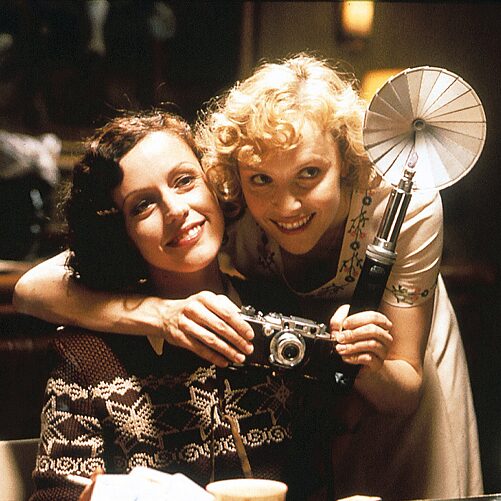The early gay activist and filmmaker Rosa von Praunheim put it in a nutshell: It Is Not the Homosexual Who Is Perverse, But the Society in Which He Lives. This is the title of a collaborative film that, starting in 1970, led West German society step by step from the dark valley of paragraph 175 to where we stand today. This shows the power and effect that film can have. The following list reflects Praunheim’s road to success and offers a collection of world-class films.
There are films with subcultural connotations and mainstream films. They challenge the perception that in Germany (and Western Europe) things are “much better than anywhere else, where it will never be like that.” In Germany, not all that long ago everything was very different. Through dedication and persistence at the cultural level, political change is actually possible.
The age of women in media has inevitably begun and lesbians are finally visible. Back in the 1970s, we gave it a maximum of ten years until women and men were equally represented in filmmaking.
A good 40 years later, we are still a long way from achieving this and, by today’s standard, the 50-50 quota should actually be 45-45-10. Nonetheless, among producers, in film funding, women are now represented in sizeable proportions, close to parity.And the films? Slowly, they’re also coming. And they are lesbian. In my almost 40-year curatorial career, lesbian films were one of the most sought-after genres! So, at the end of this list of recommendations, a bunch of new films on lesbian themes, all by women, except for one ...
Far from being exhaustive, this list is intended to encourage further research. Looking up the filmography of the directors mentioned here is highly recommended as is discovering films based on the comics of Ralf König, art and experimental filmmakers such as Michael Brynntrup and Bjørn Melhus, old masters such as Heinz Emigholz and Werner Schroeter, and feminists including Maria Lang, Ute Aurand, and Ulrike Zimmermann who in 2014, with Vulva 3.0, delivered an extraordinary film on female genitalia.
Many German co-productions transcend the usual native-white framework, for example the Turkish-German feature film Lola + Bilidikid by Kutluğ Ataman (1998) and Wanuri Kahiu’s Rafiki (2018), a German co-production with Kenya and South Africa.
European cinema
Needless to say, the research should also be extended to Switzerland and Austria. For starters, there are Daniel Schmid’s films, F. est un salaud by Marcel Gisler (Switzerland, 1998), and Der Kreis (The Circle) by Stefan Haupt (Switzerland, 2014). For Austrian films, make sure to check out Hans Fädler’s Wiener Brut (1984), Kater (Tomcat) by Händl Klaus, the documentary Brüder der Nacht (Brothers of the Night) by Patric Chiha (both 2016), and one of the best lesbian stories of the moment: Marie Kreutzer’s Der Boden unter den Füßen (The Ground Beneath My Feet) (2019).Researching German-inspired themes in international cinema, for example in the films of Luchino Visconti and François Ozon, is also worthwhile.
Yours,
Wieland Speck
Berlin, March 2019




![PORTRAIT OF A FEMALE DRUNKARD aka TICKET OF NO RETURN [1979] PORTRAIT OF A FEMALE DRUNKARD aka TICKET OF NO RETURN [1979]](/resources/files/jpg828/bildnis-einer-trinkerin_quer-formatkey-jpg-w275.jpg)



















